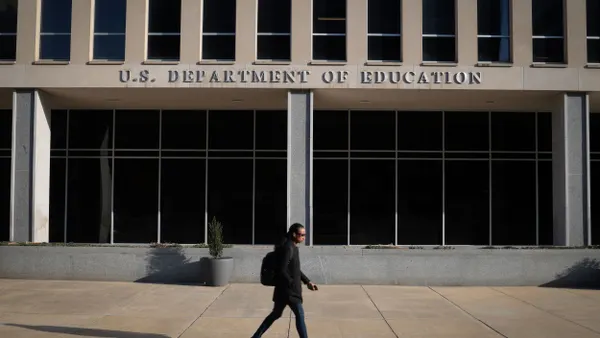A book in a child’s hand is a gateway to learning, opening a door into other worlds. Teachers know this inherently, which is the reason many K-12 educators invest in classroom libraries, curating collections of books that students can access without ever leaving their room.
This year, the National Council of Teachers of English (NCTE) is putting so much emphasis on building these classroom spaces that they’re devoting 35 specific sessions — and a significant chunk of their entire annual convention in Houston, Texas, this year — to an effort dubbed "Build Your Stack."
“We want our students to see themselves in books and to also understand others and the world more deeply through reading books,” NCTE’s president-elect Franki Sibberson told Education Dive by email. “The classroom library should invite readers to find books they may already love and it should also invite them to stretch and to grow as readers and as human beings.”
Giving students a choice
That’s the attitude of Steele Jackson, as well, a teacher so passionate about his classroom library he even tweeted about it before the start of the 2018-2019 school year at Sanford Middle School in Opelika, Ala. This is his first year teaching 5th grade, and his school does grant him some funds to purchase supplies — which can include books.
Jackson’s classroom library is designed so children have multiple choices on what they want to read, as he believes having that autonomy to choose can help plant the seed to grow into a thriving student.
“If a book is too hard, my students know and understand that it’s OK to grab another book that is easier,” Jackson told Education Dive by email. “If they still want to read a book that is well over their ability level, I allow them to have a buddy read with them. Giving students choice on how and what they read can be the most powerful thing a teacher can do to foster a love of learning in their classroom.”
Classroom libraries are never meant to replace school libraries, but as another avenue to enhance curriculum. In fact, NCTE sees them existing side-by-side with school libraries. The latter is “the hub of the school,” said Sibberson, adding that a classroom library is then “the anchor for a community of readers.”
Getting started
Building a classroom library may seem daunting for some teachers and administrators who want to add these spaces to their school. Both may have questions on which books to buy, how to present them in a classroom, and, understandably, where to find the resources to allow teachers to purchase titles.
Many of these questions will be answered at this year’s NCTE event, which will have sessions including "Immigrant Stories in Children’s Literature," "New Latinx Fiction" and "New Nonfiction," to name just a few. But for those who can’t take the time — or find the resources — to take off for a few days in October, there are other ways to get started.
For one, Sibberson believes that educators should make sure that their classroom libraries are never stagnant and focus on changing and rotating books during different times of year. New titles and topics can maintain excitement among students. Sibberson also suggests organizing books so students see the covers and not their spines, as well as keeping titles that represent multiple genres and subjects.
Jackson also makes sure his classroom library is comfortable and welcoming to students, putting rugs, pillows and even cushioned chairs around so they can relax and get lost in a great story.
Finally, Jackson notes that investing a lot of money isn’t necessary, either. He recommends tapping friends, family, other teachers and even administrators to donate books to the classroom, while also mining local thrift stores where titles can be picked up for under a dollar.
“A few places have just given me books for free because I told them I was going to use the books in my classroom,” he said. “Free books are out there, you just have to ask.”












